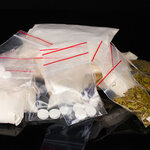Technology

Last week, prominent tech site Gigaom ceased operations with the terse note “Gigaom recently became unable to pay its creditors in full at this time”.
Started in 2006 by Om Malik, the site had raised about $40 million over that period to create a technology news site, an IT analysis business and another business running IT events. None of them could make enough money to cover the $400,000 a month needed to keep the business going.
For a site that covered the future of journalism and media in detail, it turned out that it had little insight into how to succeed in a landscape that is setting…

Two things that have caught my attention recently.
The first concerns trapping solar energy. One way to do this is to convert it directly into electricity with a solar panel, but one with much wider application would be to split water into oxygen and hydrogen, which can then be stored and transported.
Chemistry World article Sun rises on new solar route to hydrogen points to research in China and Israel where the water is first oxidised to hydrogen peroxide, which is then decomposed by a cheap chemical catalyst. The composite catalyst containing C3N4 (which I assume refers to the…

A new app for finding and mapping chromosomal loci uses multicolored versions of CRISPR/Cas9. The labeling system, developed by the University of Massachusetts Medical School, could be a key to understanding the spatial and temporal regulation of gene expression by allowing researchers to measure the precise linear distance between two known points on different chromosomes or two locations on the same chromosome in live human cells.
The nucleus of every cell in our bodies (with the exception of gametes and red blood cells) must pack into it 23 pairs of chromosomes, tight bundles…

A new system called BASIC could give synthetic biology a boost by creating artificial DNA that is faster, more accurate and more flexible than existing methods.
To engineer new organisms, scientists build artificial genes from individual molecules and then put these together to create larger genetic constructs which, when inserted into a cell, will create the required product. Various attempts have been made to standardisz the design and assembly process but, until now, none have been completely successful.
BASIC, created by researchers from Imperial's Centre for Synthetic Biology…

Apple has found a new use for their iPhone - medicine. People had already created lots of apps, of course, but ResearchKit, due out next month, is the first Apple framework to make it easier.
The framework allows new ways to create apps to track movement, take measurements, and record data and has three active modules: surveys, informed consent, and active tasks. Active tasks is the only one not intuitive - it means they can ask you to perform activities while the sensors are monitoring.
Most surprising: Unlike the usual Apple business model, ResearchKit is not part of their…

Amid all the dire warnings that machines run by artificial intelligence (AI) will one day take over from humans we need to think more about how we program them in the first place.
The technology may be too far off to seriously entertain these worries – for now – but much of the distrust surrounding AI arises from misunderstandings in what it means to say a machine is “thinking”.
One of the current aims of AI research is to design machines, algorithms, input/output processes or mathematical functions that can mimic human thinking as much as possible.
We want to better understand what goes on…

A new test that uses combinations of cells from a single donor’s blood can predict whether a new drug will cause a severe immune reaction in humans.
The test could avert disasters like the 2006 trial of the drug TGN1412, which led to six healthy young men being admitted to intensive care with multiple organ failure. The volunteers receiving TGN1412 experienced a catastrophic inflammatory reaction called a cytokine storm, a particular worry for new biological therapies, or “biologics” which use biological material such as antibodies. Many blockbuster drugs such as the cancer drugs Herceptin…

Have you ever wondered what it would be like to walk a mile (or 1.6 kilometers) in somebody else’s shoes?
Or have you ever tried to send a telepathic message to a partner in transit to “pick up milk on your way home”?
Recent advances in brain-computer interfaces are turning the science fantasy of transmitting thoughts directly from one brain to another into reality.
Studies published in the last two years have reported direct transmission of brain activity between two animals, between two humans and even between a human and a rat. These “brain-to-brain interfaces” (BBIs) allow for direct…

Drug testing is most commonly performed using urine samples and its accuracy has made it the gold standard, but collecting samples is inconvenient so a group of researchers from the Department of Laboratory Medicine at the Karolinska Institute in Sweden have been working on developing an alternative to urine testing that focuses on exhaled breath.
Professor Olof Beck, lead researcher of the study, and his team have developed the first fully validated and robust screening method for the routine measurement of drugs of abuse in exhaled breath. The procedure involves a simple method of sample…

In recent years, hundreds of new synthetic recreational drugs have emerged – drugs that neither the general public nor the scientific community know very much about.
Many of these new synthetic drugs – often referred to as “legal highs” – are dangerous and continue to lead to poisonings throughout the US and the rest of the world.
These drugs provide similar highs to other, more well-known drugs, like marijuana and cocaine. Many are still legal and others have only recently become illegal.
So why would people use these potentially harmful new drugs?
Drug users in the US have a lot to fear.…